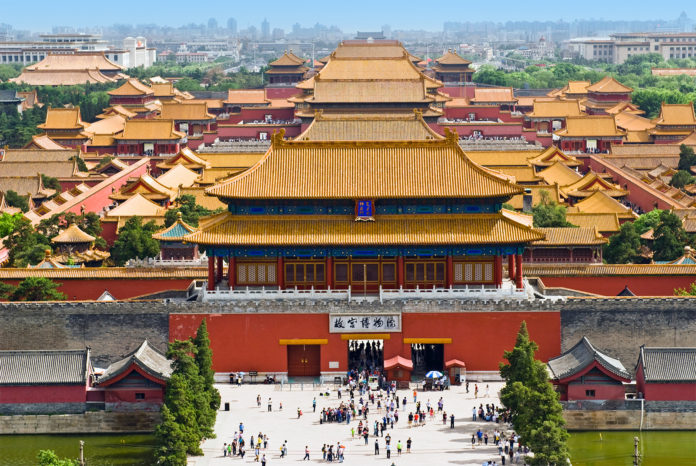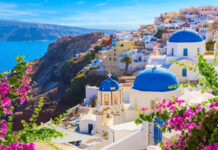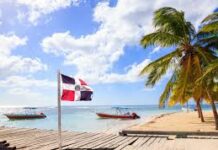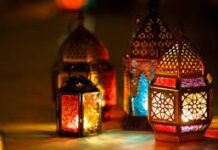Architecture is a combination of art, engineering, design and mechanics. It is not only a way of designing buildings and monuments but also a way of shaping people’s thoughts, ideas and beliefs through the physical environment. Architecture holds the power to influence the society, as it has always been a means of communicating a society’s values with its deep and rich cultural heritage.
Chinese architecture, which mainly features bi-lateral symmetry and allusion to various cosmological and mythological symbolism is both aesthetically pleasing and realistically compelling. The Forbidden City, which is China’s most glorious palace complex, is situated at the heart of the Imperial city of Beijing. Proclaimed as a world heritage site in 1987, the Imperial Palace has been listed by UNESCO as the largest collection of preserved ancient wooden structures in the world. The entire city is enveloped by opulent royal gardens, temples, the Ancestral Sacrificial temple, the Beihai Park as well as the Zhongshan and Jingshan Park. Moreover, the Forbidden City is said to be the world’s largest Imperial palace.
THE ANCIENT HISTORY
The construction of the Forbidden City took about 14 years (1406 to 1420). It started in the fourth year of the Emperor Yongle of the Ming dynasty. From the year 1420 to 1644, the city housed 14 Ming emperors. After the fall of the Ming dynasty, it served as the Imperial Palace for 10 emperors of the Qing dynasty. During the Second Opium War (1860), the palace was controlled by the Anglo-French forces and was occupied until the end of the war. Since 1912, the Forbidden City has no longer been a home to the emperors, after the abdication of Puyi, the last emperor of China. Since the establishment of the Palace Museum in The Forbidden City in 1925, it has been a popular tourist destination and hosts around 14 million visitors per year.
THE FLAWLESS STRUCTURE
The Forbidden City covers about 0.72 square km ,has 980 buildings and over 70 palace compounds. The length is around 961 m and the width is appropriately 753 m. The structure of the Forbidden City can be divided into three parts – the Defences, the Outer Court and the Inner Court.
The Defences
Surrounding the Imperial Palace, is a 52-metre wide moat, as the first line of defence. Enclosed by a 10-metre high defensive wall, there stands a spectacular watchtower, which used to be heavily guarded. There are four gates in each direction of the Forbidden City: West Glorious Gate on the west, East Glorious Gate on the east, The Meridian Gate on the south and the Gate of Divine Might on the north. The entry gate of the Forbidden City is the Gate of Heavenly Peace.
The Outer Court
The Outer Court has three main halls where the rulers conducted state affairs and grand ceremonies.
The emperor’s Dragon Throne is in the Hall of Supreme Harmony, which is the largest and the most important structure of the Forbidden City.
The Hall of Central Harmony was used as the resting place of the emperor where he used to rehearse speeches and presentations before departing to the Temple of Heaven for sacrificial rites.
The Hall of Preserving Harmony was mainly used for banquets and later for imperial examinations to be conducted.
The majestic side gardens are also a treat to the eyes.
The Inner Court
The Gate of Heavenly Purity leads to the inner living court. There are two palaces in the Inner court – The Palace of Heavenly Purity (the emperor’s sleeping quarters) and the Palace of Union and Peace (where the imperial seals were stored). The emperor’s weddings were held at the Hall of Terrestrial Tranquillity. 8 Qing emperors also resided in the Mental Cultivation Hall.
THE SPECTACULAR ARCHITECTURE
The key features of the splendid Architectural design of the Forbidden city are:
• North-South orientation and Axial symmetry
The important gates and halls of the Forbidden City were arranged symmetrically on the north-south central axis to represent the Supreme Power of the emperor. Heaven was thought to be the North star, thus, the layout points the visitors towards Heaven.
• Supreme Carpentry
The Forbidden City is the largest and most complete complex ancient wooden structures of the world. The precious Phoebe zhennan wood from the southwest jungles of China was used to construct the main frames of building.
• Majestic Colours
The Imperial Palace is mainly painted in red and yellow colours. In China, red is considered as a depiction of good fortune and happiness while the yellow colour symbolizes supreme power and divine might.
• Roof Decorations
There is a row of mystical animal statuettes placed along the ridge of the hall of the Forbidden City. The animals – dragons, Phoenix and lions have special and powerful meanings in the Chinese culture.
• Stone and Bronze lions
Stone and Bronze lions are supposed to be the symbolic guardians of the Imperial Palace. The lions are always in pairs. In ancient China, lions were considered to be the emblem of power and strength.
INTERESTING FACTS
• The Forbidden City was initially called the “Purple Forbidden City (Zǐjìnchéng).
• Forbidden city is so named because, considered to be a divine place, it was certainly forbidden to the common masses. In ancient China the ruler was said to be the son of God and therefore, the Heaven’s powers bestowed upon him.
• Birds cannot land on the roof of the Forbidden City buildings. To maintain cleanliness and magnificence, the craftsmen came up with an amazing idea – they made the slope of each roof higher and made the roof spine wider than the width between a bird’s claws. The roofs are also made of slippery glazed tile which make it impossible for the birds to land.
• The Forbidden City is also a home to more than a 100 cats. Many concubine members kept cats during the Ming and Qing dynasty’s rule. Although the dynasties collapsed, the cats remained in the Palace. Some cats are the descendants of the royal cats and there are other stray cats that have entered from outside the Forbidden City. The cats usually move around a fixed area, patrol every corner, and catch mice. They guard the Forbidden City with their prowess.
RARE AND INVALUABLE ART WORKS
Few of the numerous treasured artifacts are present in:
The Clocks Gallery located in the Hall of Ancestral Offerings, the Treasures Gallery in the Palace of Tranquil Longevity, the Paintings and Calligraphy Gallery in the Hall of Military Eminence, the Porcelain and Ceramics Gallery in the Hall of Literary Glory and the Bronze ware Gallery in the Palace of Celestial Favour.
The Imperial Palace of the Forbidden City is a traveler’s paradise. It is one of the most artistically fulfilling yet less talked-about architectural masterpieces of the world.
By Srija Bandyopadhyay
















